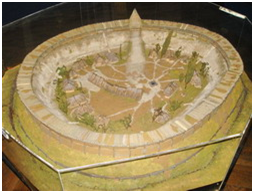History
In antiquity, Moldova's territory was inhabited by Dacian tribes. Between the 1st and 7th centuries AD, the south was intermittently under the Roman, then Byzantine Empires. Due to its strategic location on a route between Asia and Europe, the territory of modern Moldova was invaded many times in late antiquity and early MiddleAges,includingby Goths, Huns, Avars, Bulgarians, Magyars,Pechenegs, Cumans, Mongols and Tatars.

The Principality of Moldavia, established in 1359, was bounded by the Carpathian Mountains in the west, Dniester river in the east, and Danube River and Black Sea to the south. Its territory comprised the present-day territory of the Republic of Moldova, the eastern eight of the 41 counties of Romania, and the Chernivtsi Oblast and Budjak region of Ukraine. Like the present-day republic and Romania's north-eastern region, it was known to the locals as Moldova. Moldavia was invaded repeatedly by Crimean Tatars and, since the 15th century, by the Turks. In 1538, the principality became a tributary to the Ottoman Empire, but it retained internal and partial external autonomy/
In accordance with the Treaty of Bucharest of 1812 and despite numerous protests by Moldavian nobles on behalf of the sovereignty of their principality, the Ottoman Empire (of which Moldavia was a vassal) ceded to the Russian Empire the eastern half of the territory of the Principality of Moldavia along with Khotyn and old Bessarabia (modern Budjak), which Russia had already conquered and annexed.

The new Russian province was called "Oblast of Moldavia and Bessarabia", and initially enjoyed a large degree of autonomy. After 1828 this autonomy was progressively restricted and in 1871 the Oblast was transformed into the Bessarabia Governorate, in a process of state-imposed assimilation, "Russification". As part of this process, the Tsarist administration in Bessarabia gradually removed the Romanian language from official and religious use. The western part of Moldavia (which is a part of present-day Romania) remained an autonomous principality, and in 1859, united with Wallachia to form the Kingdom of Romania.
The Treaty of Paris (1856) returned three counties of Bessarabia—Cahul, Bolgrad and Ismail—to Moldavia, but in the Treaty of Berlin, the Kingdom of Romania agreed to return them to the Russian Empire. Over the 19th century, the Russian authorities encouraged colonization of the south of the region by Romanians, Ukrainians, Lipovans, Cossacks,Bulgarians Germans Gagauzes, and allowed the settlement of more Jews, to replace the large Nogai Tatarpopulation expelled in the 1770s and 1780s, during Russo-Turkish Wars; the Moldovan proportion of the population decreased from an estimated 86% in 1816, in the aftermath of the Muslim expulsion, to around 52% in 1905. During this time there were anti-Semitic riots, leading to an exodus of thousands of Jews to the United States of America.



